Companion plants for blueberries allow you a richer and healthier supply of these delicious berries.
Do you love fresh blueberries or blueberries in smoothies or pies?
Well, you can have an abundant supply by planting them in your home garden.
Planting blueberries with their companion plants don’t only ensure a healthy supply of these antioxidant-packed superfoods.
The idea of blueberry companion planting bears ample benefits for your garden.
First, it offers a beautiful ornamental benefit – you will have a garden that attracts both people and beneficial insects and pollinators.
Further, companion planting for blueberries means that you will be enjoying a harvest of two plant types while they protect one another.
Blueberries can protect a selection of plants from damaging pests.
They also make good companions for ornamental plants that attract pollinators to help them survive.
Wondering how to get the best out of your blueberry garden?
Here are19 plants you should plant with your blueberries this season.
Table of Contents
What Are The Best Plants to Plant With Blueberries?
Blueberries grow best with a variety of flowers, herbs, grass, and vegetables.
Flowering plants like lilacs and azaleas are the best plants for blueberries.
In addition to their identical growing conditions, these flowering plants thrive well near blueberries as the latter helps to attract pollinators essential for the growth and thriving of the plants (these plant varieties require cross-pollination).
Plus, growing together, they offer ornamental benefits for your garden. Ultimately, there is a multitude of plant options you can grow near blueberries for a healthy and abundant garden.
Blueberries are designed to thrive perfectly on acidic soils (around pH 4.5) with full exposure to sunlight.
Therefore, the best companion plants for these fruits will survive relatively well in these conditions and facilitate the conditions.
For example, plants that provide shade will not be the best options in this case since blueberries love full exposure to the sun.
While blueberries accommodate other types of plants too, they particularly grow best with several flowers, herbs, and grass.
Most flowers attract pollinators while their blossoms offer shade.
They also complement each other with blueberries for your garden’s ornamental benefits.
On the other hand, herbs promote the overall growth and thriving of blueberries.
They provide living mulch, and ground cover, and maintain optimal soil moisture and temperature while also eliminating unwanted weeds.
Grass also promotes the growth of blueberries by fertilizing and enriching the soil.
Now, we’ve ventured out to explore the best blueberry companion plants, and after intense research, here is a complete list of 19 reliable companion plants for blueberries.
19 Best Blueberries Companion Plants
1. Rhododendron

Rhododendrons are excellent companions for blueberry bushes.
These flowering plants, like blueberries, love acidic soils and exposure to the sun.
While their blossoms complement blueberries for an ornamental look in the garden, their leaf foliage protects blueberry roots by offering shade.
These sensitive blueberry roots can really use this shield during extremely hot summer days.
2. Azalea

These acid-loving flowering cousins of blueberries grow with the fruits pretty well.
Similar to Rhododendrons, azaleas offer shade to blueberry roots while complementing their ornamental element in your garden.
3. Lilac
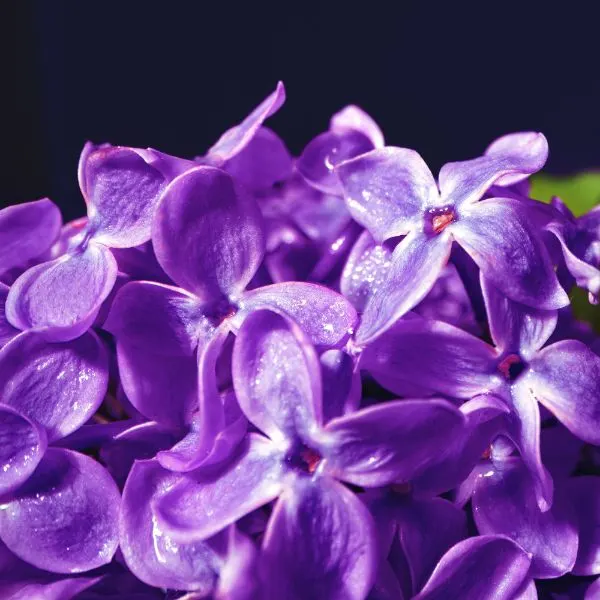
Like Azaleas and Rhododendrons, lilac is a versatile and excellent blueberry companion flowering plant.
Its thin-growing nature allows you to effortlessly pair it with the fruits, especially if you have a lot of space to fill in your fruit garden.
Lilacs also make impressive companion plants for blueberries as the flowers bloom around the same time the fruit bushes bloom to make your garden strikingly beautiful.
Further, lilacs play a vital role in attracting beneficial pollinators to promote your garden’s health.
Plus, you can always cut a few flowers after blooming for your favorite vases in your drawing room and bedrooms.
4. Comfrey
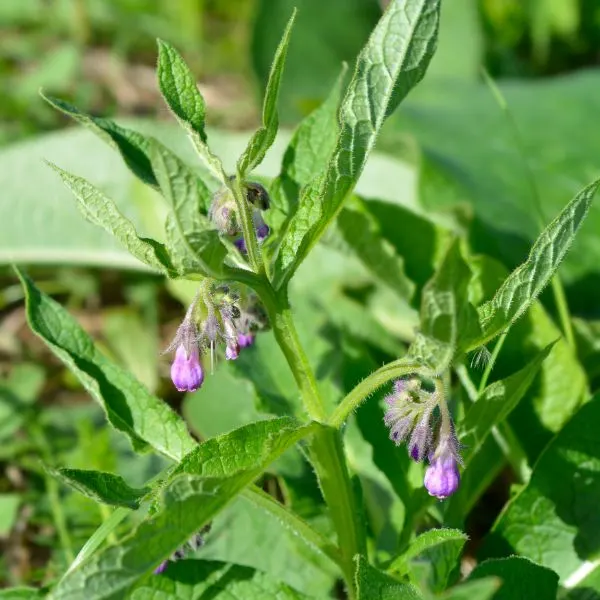
The minuscule, purple blooms of the comfrey flowering plant pair exceptionally well with the blueberry plant.
The fast-growing and tall flowering plant is an excellent attractor of beneficial pollinators.
Its fast growth rate also means it falls fast, so you can always use the fallen leaves and flowers as mulch for other plants growing nearby.
The mulch you get from comfrey helps retain moisture in the soil, offers protection from the elements, and increases nutrients.
Comfrey boosts nutrients in the soil by fixing nitrogen and storing it as nitrates in the roots.
So, in addition to being a great companion plant for blueberries, it’s an overall good plant for improving the quality of your soil.
5. Daisies

Wildflowers, like daisies, bee balms, and poppies are excellent companions for blueberries.
In addition to their incredible ornamental benefits, they complement each other in their growth.
In fact, daisies feature a mix of different colors, adding to their pleasant aesthetics.
Further, planting daisies closer to blueberries allows them to attract pollinators essential for the growth of both daisies and blueberries. Additionally, daisies attract predatory insects that can keep away possible damaging bugs away.
Other excellent examples of wildflowers similar to daisies include lupine. Coneflower and black-eyed Susan, to name a few.
6. Heather
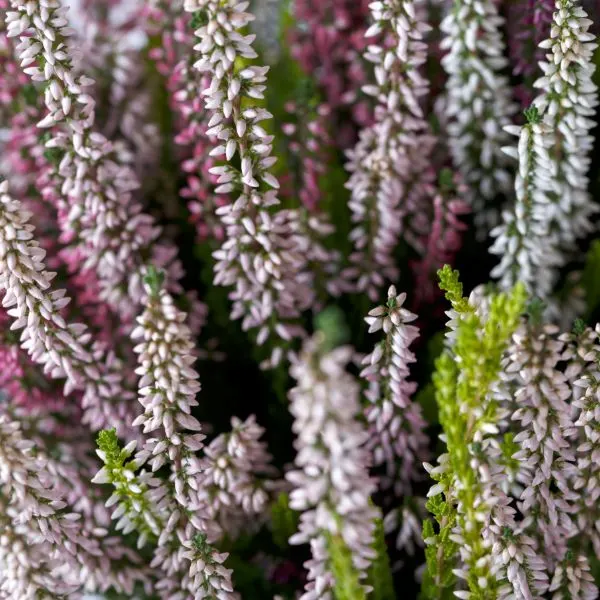
The thin, long, white, pink to purple heather blooms complement blueberries in growing pretty well.
Heather does a good job at attracting pollinators to the herb garden while keeping out bugs (via predatory insects).
Their long thin and tiny colorful blooms create a fantastic cover for blueberries for a blissful, pink-to-purple garden look.
7. Columbine
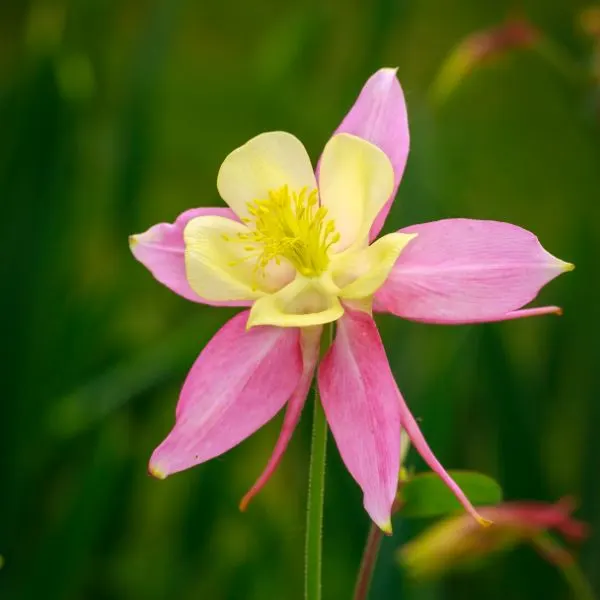
Columbines are known to produce some of the most beautiful and unique-looking blooms.
Perennial blooms come in a selection of white, blue, red, pink, and purple, growing to about 20 inches.
So, if you want to give your garden an instant facelift, you can’t go wrong with these flowers.
What’s even better is that columbine grows pretty well with blueberries.
They also provide contrasting bright green foliage to the darker blueberries while requiring minimal maintenance to maintain the look.
8. Hydrangea
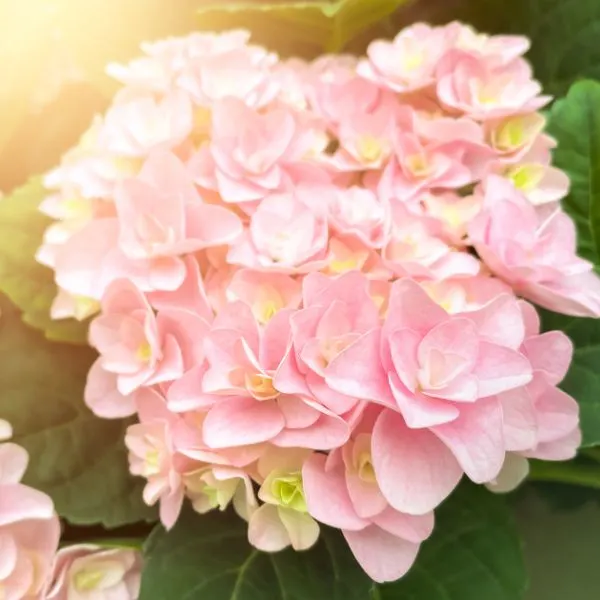
Boasting deep green foliage and beautiful bright cherry blossoms, hydrangeas grow near and complement blueberries very well.
Plus, their growing timeline keeps your garden interesting nearly all year round.
In addition to growing taller than blueberries, the shrubs produce blooms right after the blueberry flowers begin to fade.
The best part about these flowering plants is that they come in different varieties you can choose from depending on your preferences.
Plus, while you pick blueberries for dessert and snacks, you can also cut a few flowers for a beautiful ornamental display inside your home.
9. Borage
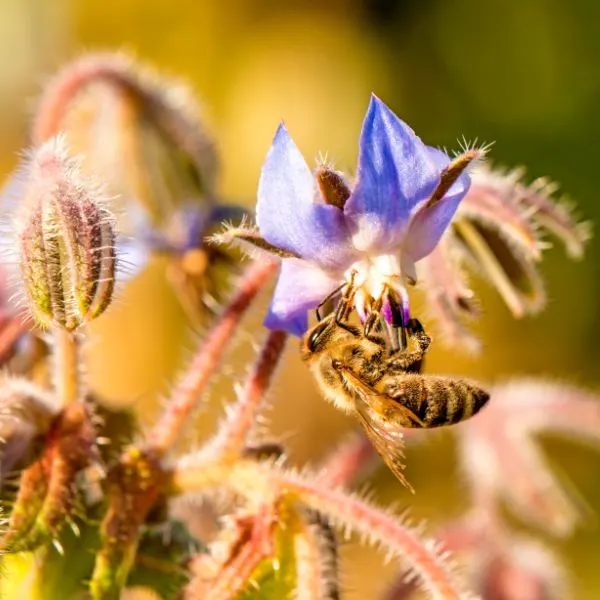
Blueberries grow surprisingly well with herbs.
Borage is one of the many excellent herbs to pair with blueberries.
These edible flowers attract predatory insects that prevent invasive bugs from damaging these plants.
But, you want to trim and cut back on the borage from time to time as it can get easily invasive when left untouched.
10. Parsley
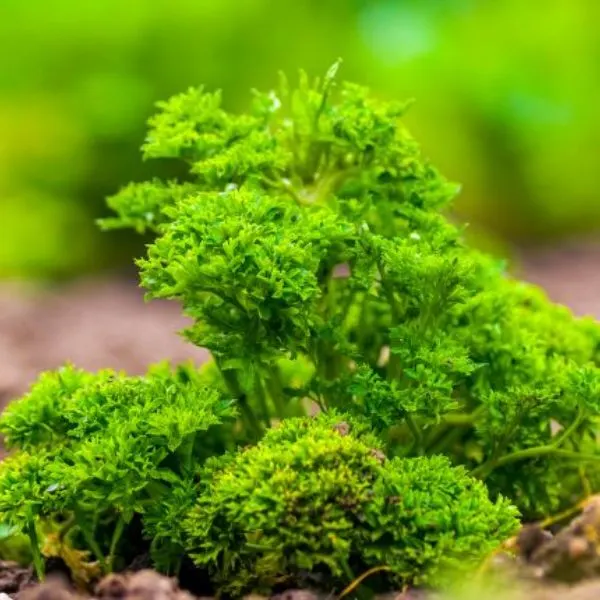
Parsley, like blueberries, tolerates similar growing conditions, with an affinity to acidic soil.
When grown next to blueberries, it attracts predatory insects that do a good job of repelling unwanted pests.
11. Basil
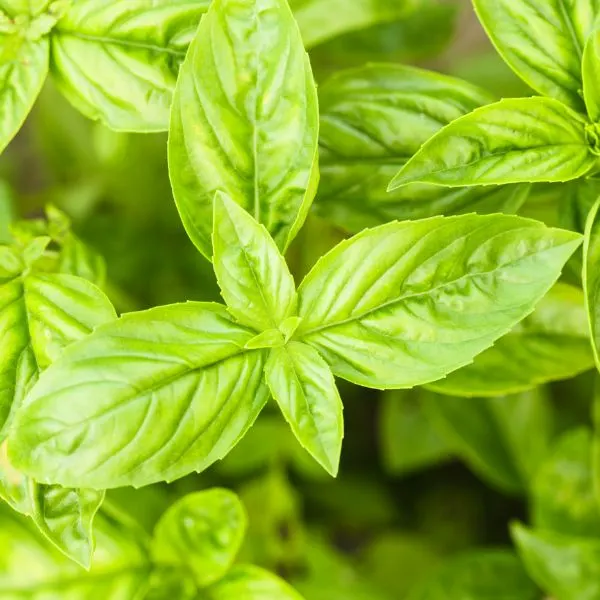
Basil grows to about two feet tall but doesn’t block blueberries from receiving the sunlight it needs.
However, it’s not only the non-blocking of the sun that makes basil a good companion plant.
It also offers superior natural protection from pests.
12. Thyme
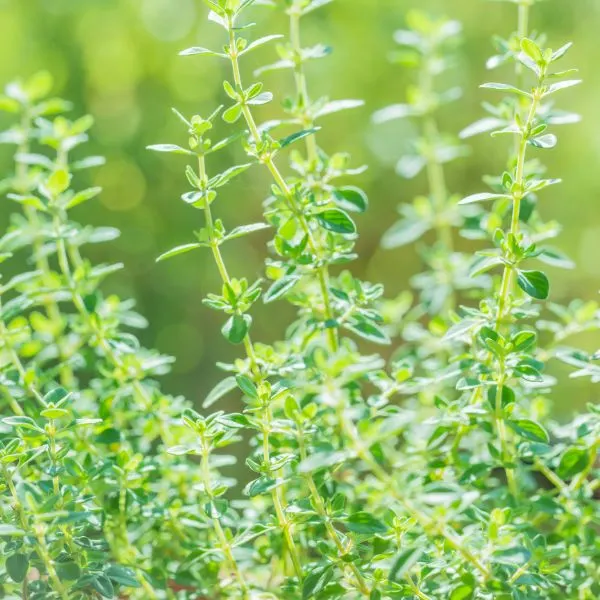
If you are looking for the perfect ground cover for your blueberry garden, there may just be an option for you.
In this case, the herb you want to grow is thyme.
Thyme is a perennial herb that grows low on the ground and pairs well with blueberries.
Therefore, it makes a perfect ground cover for the fruit.
Additionally, its low-growing profile allows it to act as a live mulch to trap moisture for the blueberries while keeping weeds out.
Further, thyme and blueberries complement each other, acting as the other’s natural repellent.
Another exciting fact is both blueberries and thyme are perennial plants, so their roots regrow every year.
This eliminates the hassle of having to plan what to plant every spring.
13. Dill
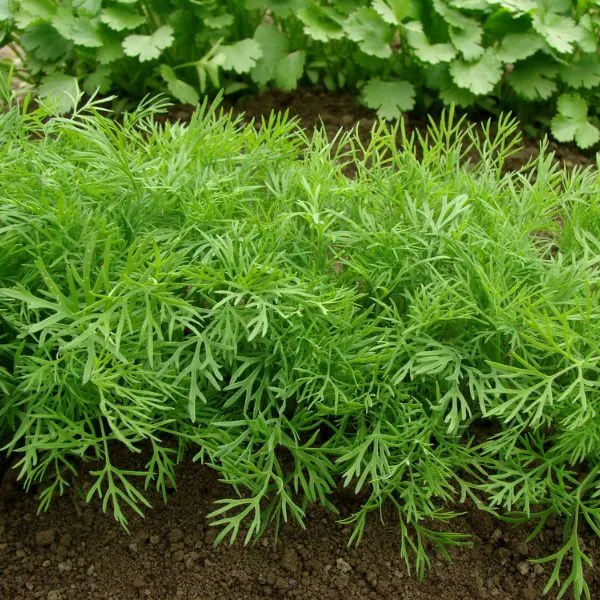
When planted near blueberries, the soft-scented dill herb comes with its benefits too.
In particular, dill is a good attractor of beneficial insects like ladybugs and wasps that help to keep out garden pests.
14. Cranberries
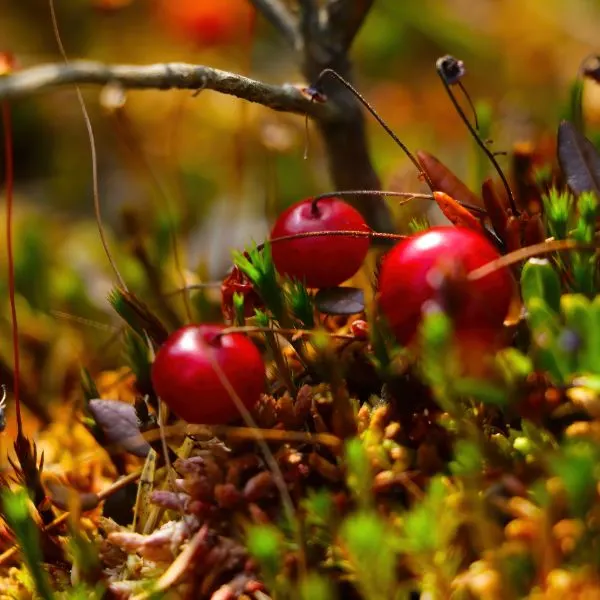
Blueberries have a good selection of companion berry plants that can grow successfully.
Cranberries have the same soil and pH needs as those blueberries.
So, the two plants complement each other pretty well. Plus, cranberries don’t compete for nutrients with blueberries.
This explains why blueberries and cranberries are a pretty normal sight for many berry gardens.
15. Pine
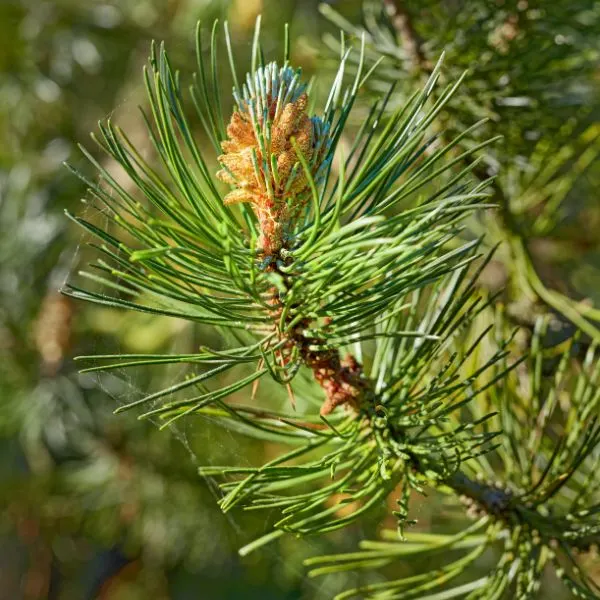
Did you know that most evergreen trees, like pine, make incredible companion plants for blueberries?
In addition to growing in the same environmental conditions, pine offers shade to blueberries from the strong afternoon sun.
This, in turn, allows the berry bushes to retain their moisture, which is essential for thriving.
Further, pine trees fix the soil to provide the acidic conditions the berries need to grow well. If you lack pine, evergreen trees such as juniper, spruce, yew, and cypress are excellent options.
16. Dogwood Tree
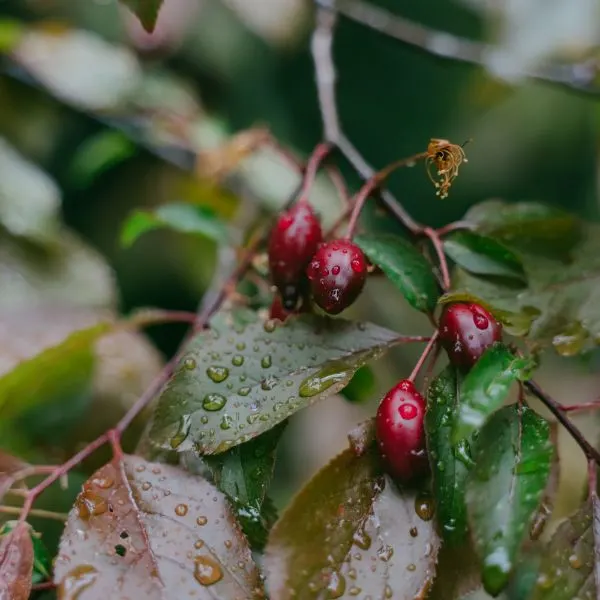
Dogwood trees pair perfectly with blueberries.
In addition to sharing the soil and sun needs with blueberries, this hardy tree comes in different varieties to complement your home’s landscaping.
Typically, a dogwood tree produces beautiful spring blossoms while its leaves turn red and purple in fall and berries turn red for an ever-changing aesthetically pleasing look in your garden.
This unique look pairs well with blueberry shrubs, providing them shrubs with shade and ornamental companionship.
17. Ferns
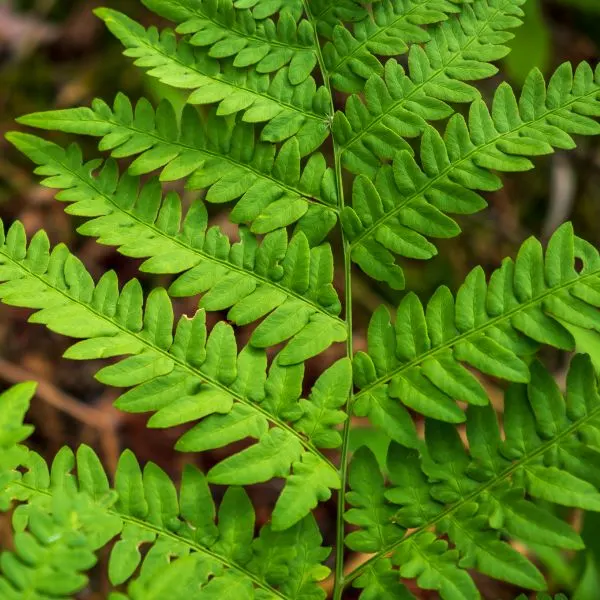
Ferns are a good companion plant for blueberries if you want to create a beautiful landscape for your garden.
The tree features long and bright green leaves that provide a perfect accent to darker blueberry shrubs.
But, the trees grow even better with a shade of overhanging evergreen trees to complement the berry shrubs better.
Plus, fern trees are low maintenance, making them great for garden lovers or beginners who don’t want a lot of work.
18. Holly Tree
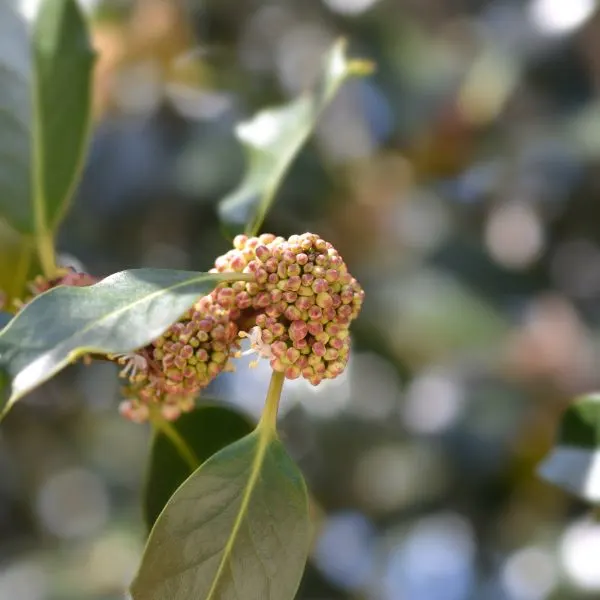
Holly tree grows well with blueberries without affecting them.
However, it only comes with ornamental advantages when it comes to companionship with blueberry shrubs.
Opt for a holly tree if you want to maintain beautiful aesthetics in your garden during the winter period.
While the blueberries lose their lives during cold weather, the holly tree maintains its visual ornamental look.
19. Mountain Laurel

Growing as a shrub, just like blueberries, mountain laurel is an excellent blueberry companion plant.
The low-maintenance shrub tree complements the blueberry shrubs with its tiny green leaves and can be planted in front or behind the berry shrubs.
Mountain laurel also produces its blooms to further add to your garden’s ornamental look.
7 Bad Companion Plants for Blueberries
Undoubtedly, blueberries pair well with a wide variety of plants.
But, this doesn’t mean that some plants pair well with these berries.
While there are pretty few of them, it’s good to know which plants to ABSOLUTELY avoid planting next to blueberries.
So, here are 7 plants to avoid planting with blueberry shrubs;
1. Nightshades

Avoid pairing plants from the nightshade group with blueberries.
These include plants such as tomatoes, potatoes, peppers, and eggplants. This is because blueberries require a sufficient amount of sunlight to thrive.
Therefore, they may not do very well under the shade of these plants.
2. Brassicas
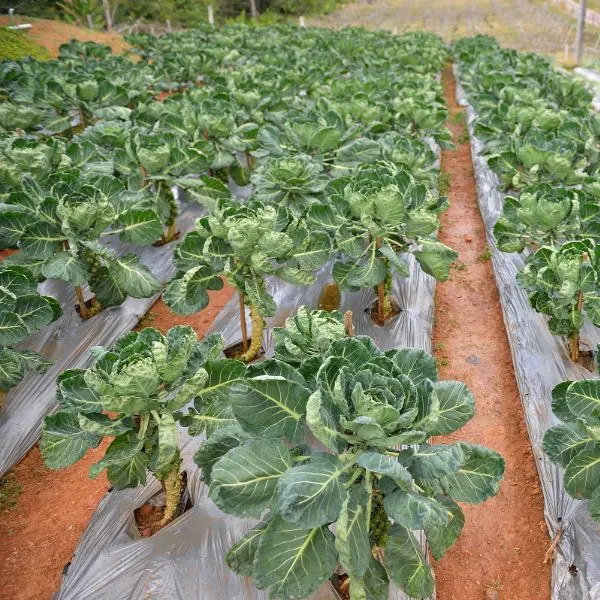
Brassicas plants are also not the best companion plants for blueberries. Plants that belong to this family, such as cabbage, typically have heavy nutritional needs and similar growing conditions to those of blueberries.
Therefore, planting the berries with Brassicas means the two will aggressively compete for nutrients.
Here’s a complete list of common Brassica plants;
- Horseradish
- Kale
- Broccoli
- Pak Choi
- Brussel Sprouts
- Lettuce
- Arugula
- Mizuna
- Mustard
- Turnips
- Swiss Chard
- Cauliflower
3. Raspberries
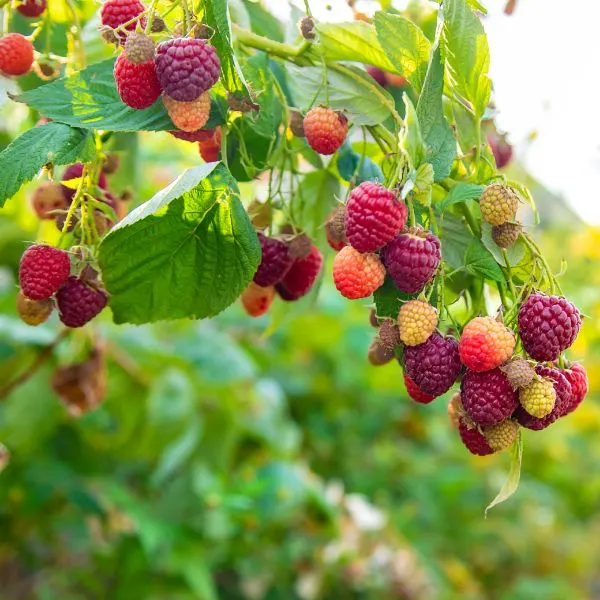
Yes, you read right! You can find berries that don’t do so well with blueberries.
Berries, such as raspberries don’t grow well with blueberries because the two have completely opposite growth needs.
So, pairing them in the same location makes it pretty difficult to grow a successful yield from both.
In addition to their different plant structures, raspberries and blueberries also have different harvest periods.
Further, while blueberries (pH 4.5-5.5) love acidic soil, blueberries prefer a less acidic environment (pH 5.5 to 6.5).
4. Some vegetables

You will also find vegetables that don’t pair well with blueberries.
The two main reasons are the heavy nutrient needs (they will compete with blueberries for nutrients) and less acidic soil needs.
Other vegetables that compete for nutrients with blueberries include asparagus, celery, leeks, onions, rhubarb, and spinach.
On the other hand, here’s a list of vegetables with less acidic soil needs than blueberries;
- Artichokes
- Beans
- Beets
- Fennel
- Collard greens
- Radish
- Squash
- Peas
5. Some Herbs

Herbs such as marjoram, oregano, cilantro, chives, sage, and tarragon are not ideal companion plants for blueberries.
This is because they have different soil requirements.
Unlike the acidic soils blueberries love, these herbs prefer weak acidic to neutral soils (pH 6.0 to 7.5).
6. Fruits
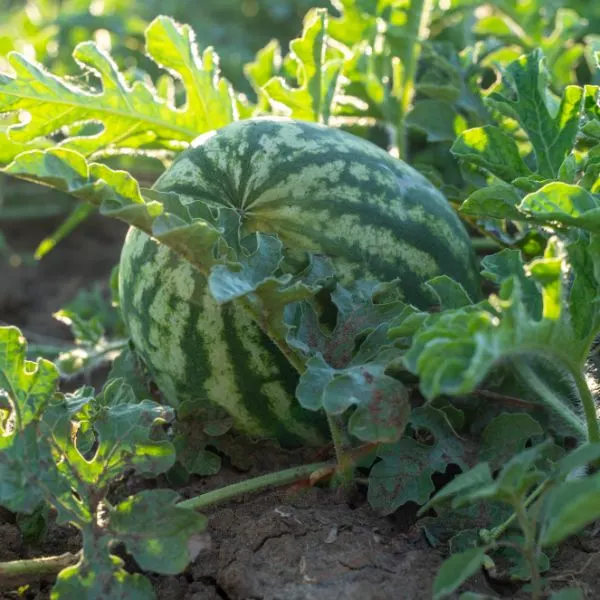
Fruits with less acidic to neutral soil needs don’t do well when paired with blueberries too.
Three of the most common fruits are watermelon, honeydew, and cantaloupe.
7. Sunflower

Many flowers seem to do very well with blueberries.
However, sunflowers don’t do quite as well.
Their pH 6.0 to 7.0 soil needs to make the conditions that blueberries grow in too intense for them.
What Characteristics To Look Out For In The Worst Plants To Pair With Blueberries?
When choosing the right companion plants for blueberries, you want to look at three main characteristics.
If the plants exhibit any of these characteristics, it’s a clear sign that they are not ideal companion plants for blueberries.
The characteristics include:
1. Shading
Shade is the enemy of your blueberries.
Blueberries prefer contact with full direct sun for several hours a day. So, planting them near tall plants that can block sunlight may inhibit their growth.
This explains why nightshade plants, like tomatoes, are not ideal to pair with blueberries.
2. Heavy Nutrient Requirements
Plants that have heavy nutrient requirements may not be the best companion plants for blueberries.
Generally, blueberries love organic material and mild compost and do poorly with fertilizer.
So, pairing them with plants that have heavy nutrient requirements may not be wise as they may need to be supplemented by fertilizer.
This, in turn, may result in damaging your blueberry garden as you try to feed these plants.
pH: Blueberries love acidic soils with a pH range of 4.5 to 5.5. So, plants that require soils with other pH ranges, particularly less acidic or neutral soils are not the best companion plants.
Other smaller characteristics to look out for vary from plant to plant.
For example, in addition to the difference in pH requirements, herbs, such as cilantro are water-loving.
Other incompatible plants may simply deem so due to their preference for less-drained soils (blueberries love well-drained soils).
Printable Infographic

Conclusion
What sets blueberries from many other fruit plants is their pretty reasonable versatility.
The growth needs of blueberries allow them to grow well with a variety of plant groups, including edible and non-edible plants.
You can plant them with a wide selection of herbs, vegetables, other berries, trees, and flowering plants.
These berries don’t only protect their companion plants from pest infestation and promote healthy growth.
They work wonders for ornamental plants by encouraging pollinators crucial for cross-pollination.
So, whether you want to enjoy a generous yield of freshly grown organic food or simply want to beautify your ornamental garden – you can’t go wrong by planting blueberries with their natural companions.
Video of the top 14 companions
FAQs
Still, have unanswered questions about blueberries?
Check out these commonly asked questions to find out what you are looking for;
What Conditions Does Blueberries Grow Best In?

Blueberries prefer to grow in sunny locations on well-drained, acidic soils.
The soils should be free of weeds and have access to plenty of water.
Typically, the soil pH blueberries thrive the most around 4.5with access to direct full sun.
When pairing blueberries with their companion plants, make it a point to set the companion plants away from the blueberries’ shallow roots
Why Should You Not Plant Blueberries Close To Each Other?
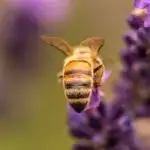
When planting blueberries, you shouldn’t keep them close together to make cross-pollination easier.
While many can still self-pollinate, cross-pollination comes with its advantages.
Most notably, cross-pollination allows you to get a better and bigger yield, cross-pollinated blueberries pollinated tend to have sweet and fatter produce.
Why Are Blueberries A Good Companion Plant?
Blueberries are good companion plants because they are naturally resistant to many garden pests.
So, growing them with various plants can help steer away damaging pests from these plants.
Further, blueberries also make excellent companions for a selection of ornamental plants and help to attract pollinators (beneficial insects such as ladybugs) that aid in cross-pollination.
On the other hand, pairing blueberries with certain plants works great for them too.
For example, some herbs can promote faster growth or better taste in berries.
Additionally, other herbs provide ground cover to retain moisture and cool the plants.
Can You Plant Blueberries With Other Berries?

It depends on the type of berries you want to plant with blueberries.
Berries, such as cranberries, grow pretty well with blueberries.
This is because they have the exact environmental needs and don’t compete for nutrients.
In fact, to get the best results, pair blueberries with cranberries and add herbs for ground cover for a completely elegant berry garden.
When it comes to berries such as strawberries, however, companionship isn’t as easy.
Strawberries have slightly varying pH needs of about 5.4 to 6.5 while blueberries have pH needs of about 4.5.
Nonetheless, you can still pair blueberries and strawberries in the same soil.
But, leave a reasonable amount of space between the two plants to prevent the strawberry roots from taking over the garden space.
Other good companion berries for blueberries include pine berries.
Can I plant blueberries and strawberries together?

Yes, blueberries and strawberries can be planted together. Both plants are relatively small and can be grown in raised beds or containers. They also have similar soil and moisture requirements.
Just note that one is a shrub and one is a perennial plant so you will need to do some maintenance on the blueberry side of things to keep them from taking over.
What should I plant between blueberry rows?

You can plant cover crops like clover, rye and oats to help add organic matter to the soild. Fruit wise you can add strawberries, raspberries, blackberries, and rhubarb. Just be aware of the space requirements for the different types.
Check out more types of things
